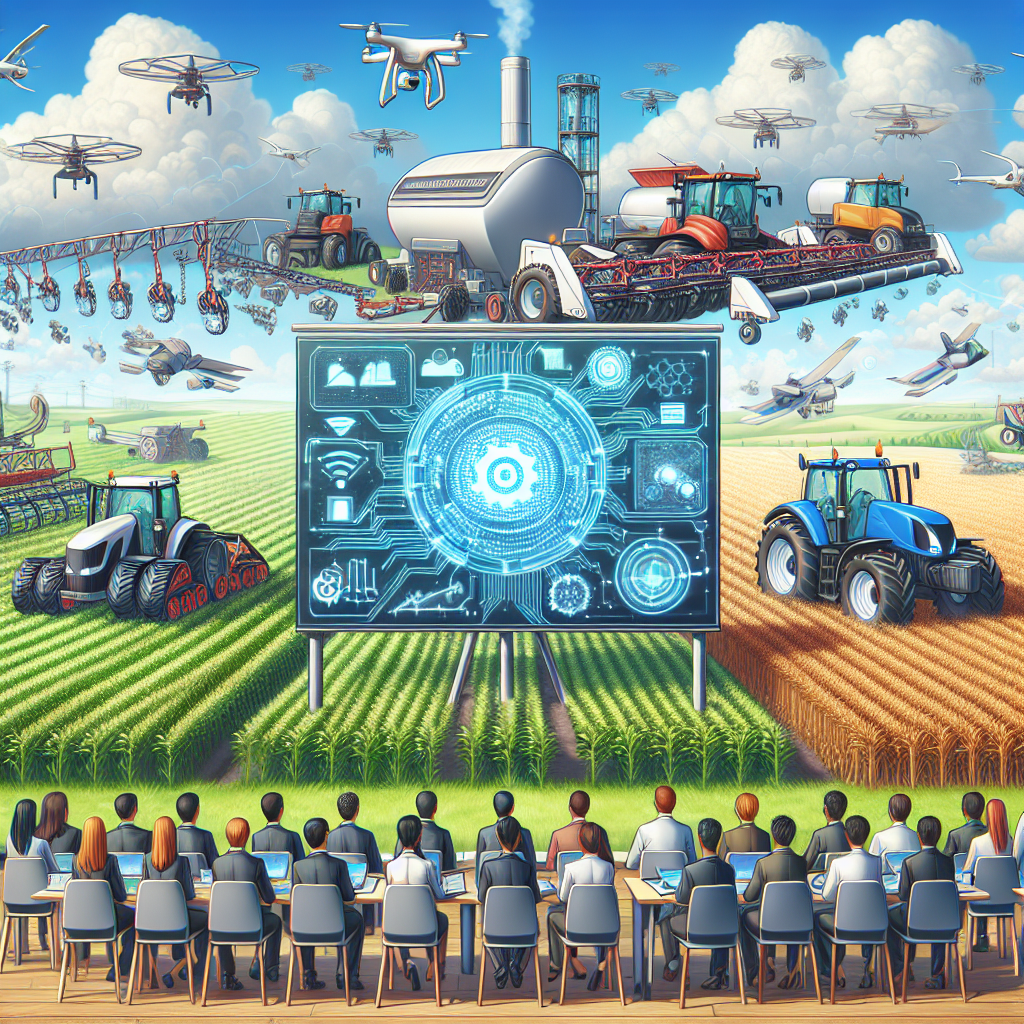In recent years, the agricultural industry has been rapidly evolving with the advancement of technology. One of the most significant developments in this sector has been the integration of artificial intelligence (AI) into various aspects of agricultural education and training programs. AI has the potential to revolutionize the way farmers are trained and educated, leading to more efficient and sustainable farming practices. In this article, we will explore the benefits of AI in agricultural education and training programs, as well as some frequently asked questions about this emerging technology.
Benefits of AI in Agricultural Education and Training Programs:
1. Improved decision-making: AI can analyze vast amounts of agricultural data to provide insights and recommendations to farmers. This can help farmers make more informed decisions about crop management, pest control, and irrigation, leading to higher yields and reduced costs.
2. Personalized learning: AI can create personalized learning experiences for agricultural students based on their individual needs and learning styles. This can help students to learn at their own pace and focus on areas where they need the most improvement.
3. Real-time monitoring: AI can be used to monitor crop health, soil moisture levels, and weather conditions in real-time. This allows farmers to make timely adjustments to their farming practices to optimize crop yields and minimize losses.
4. Predictive analytics: AI can use historical data and machine learning algorithms to predict future trends in agriculture, such as crop prices, weather patterns, and pest outbreaks. This can help farmers to plan ahead and mitigate potential risks.
5. Automation: AI-powered robots and drones can be used to automate repetitive tasks in agriculture, such as planting, watering, and harvesting. This can save farmers time and labor costs, as well as reduce the risk of human error.
6. Sustainable farming practices: AI can help farmers to implement more sustainable farming practices, such as precision agriculture and agroforestry. This can lead to reduced environmental impact, improved soil health, and increased biodiversity on farms.
7. Access to expertise: AI can provide farmers in remote or underserved areas with access to agricultural expertise and resources that may not be available locally. This can help to bridge the gap between smallholder farmers and larger agricultural enterprises.
8. Collaboration and knowledge sharing: AI can facilitate collaboration and knowledge sharing among farmers, researchers, and agricultural experts. This can help to create a more connected and informed agricultural community, leading to greater innovation and productivity.
Frequently Asked Questions about AI in Agricultural Education and Training Programs:
1. What is artificial intelligence (AI) and how is it used in agriculture?
Artificial intelligence (AI) is a branch of computer science that focuses on creating intelligent machines that can perform tasks that typically require human intelligence, such as learning, reasoning, and problem-solving. In agriculture, AI is used to analyze agricultural data, make predictions, and automate tasks to improve farm efficiency and productivity.
2. How can AI benefit farmers in agricultural education and training programs?
AI can benefit farmers in agricultural education and training programs by providing personalized learning experiences, real-time monitoring of crops, predictive analytics, automation of tasks, and access to expertise and resources. These benefits can help farmers to make more informed decisions, optimize crop yields, reduce costs, and implement sustainable farming practices.
3. What are some examples of AI technologies used in agriculture?
Some examples of AI technologies used in agriculture include:
– Precision agriculture: AI-powered sensors and drones can be used to monitor crop health, soil moisture levels, and weather conditions in real-time.
– Machine learning: AI algorithms can analyze historical data to predict future trends in agriculture, such as crop prices and pest outbreaks.
– Robotics: AI-powered robots and drones can be used to automate tasks in agriculture, such as planting, watering, and harvesting.
4. How can farmers access AI technologies for agricultural education and training programs?
Farmers can access AI technologies for agricultural education and training programs through online courses, workshops, webinars, and mobile apps. They can also collaborate with agricultural experts and researchers who are using AI in agriculture to learn about the latest trends and best practices in the industry.
5. Are there any challenges or limitations to using AI in agricultural education and training programs?
Some challenges and limitations to using AI in agricultural education and training programs include the cost of implementing AI technologies, the need for access to reliable internet connectivity in rural areas, and the potential for job displacement due to automation. It is important for farmers to carefully consider these factors and seek guidance from experts when adopting AI technologies in agriculture.
In conclusion, the integration of artificial intelligence (AI) into agricultural education and training programs has the potential to revolutionize the way farmers are trained and educated. AI can provide personalized learning experiences, real-time monitoring of crops, predictive analytics, automation of tasks, and access to expertise and resources. These benefits can help farmers to make more informed decisions, optimize crop yields, reduce costs, and implement sustainable farming practices. It is important for farmers to stay informed about the latest trends and best practices in AI in agriculture and seek guidance from experts when adopting AI technologies in their farming operations.

